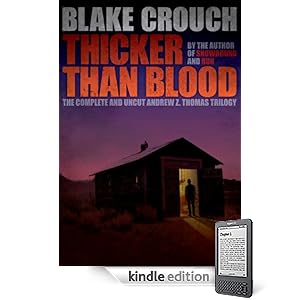I invited author, Martha Marks, to post on my blog, because we write about the same time period: AD first century Rome. If you like my novel, Vestal Virgin (suspense in ancient Rome), chances are you will also enjoy Rubies of the Viper.
Here's a description:
When her brother is murdered in first-century Rome, Theodosia Varro inherits the family estate, going from poverty and isolation to great wealth and a prestigious position in society. Unfortunately, she lives in a time and a place that deny women of her class the very things she most desires: personal freedom and self-determination. Only by identifying her brother's killer can she feel safe, yet her efforts take her in quite the opposite direction. After her own actions and the scheming of others lead to catastrophe, Theodosia struggles to survive and recover what matters most in her life.
The book is available in eformats and in paperback.
I asked Martha 5 Questions about her writing:
1. 1) Rubies of the Viper is set in ancient Rome. If you lived in this time period, who would you be? And why?
Assuming I’d been born female in first-century Italy, I would be Theodosia, my 19-year-old protagonist. She and I (in my younger days) share many basic traits: strong-willed, independent-minded, impulsive, stubborn, and naive. Of course, I could point out an equal number of ways that we’re different, too.
At the start of my novel, Theodosia has just inherited a vast estate and a high social position, for which she is completely unprepared. She’s an easy target for ambitious men. As a child, her surrogate mother and only friends were slaves; now she owns thousands of slaves and struggles in her relationships with them. Her efforts to feel more secure by identifying her brother’s killer lead to trouble, as does her determination to buck social norms and live her life as she wishes. By the last third of the novel, she has dug a very deep hole for herself and can only rely on her wits and guts (plus a little help from her friends, both slave and free) to get out of it.
I enjoyed creating the character of Theodosia and hope that under similar circumstances I’d have been as courageous and clever as she.
2. 2) What drew you to this time period?
I literally can’t remember a time when I wasn’t fascinated by first-century Rome. At age seven, visiting Rome, Pompeii and Herculaneum with my parents, I was certain I’d been there in a previous life. As a teenager, while my friends were reading Nancy Drew, I devoured—over and over—The Robe, Quo Vadis, Ben Hur, The Last Days of Pompeii, and other classic tales of ancient Rome. Those books influenced me more than anything else I ever read, so it’s no surprise that when I began to write fiction in the 1980s, that’s the direction I turned.
3. 3) You mentioned that you’re working on another novel. Is it set in the same period? Please say a bit about your next book.
My in-progress sequel to Rubies of the Viper is tentatively titled The Ruby-Serpent Amulet. It picks up a few hours after the end of Rubies of the Viper and follows the lives of several major characters through the next dozen years. I’m enjoying writing it and hope to have it out by the end of 2012.
4. 4) At one point you were represented by Richard Curtis, a major New York agent. Do you still hope to publish traditionally?
Richard Curtis is a wonderful man and a fine agent. After spending 5 years writing Rubies of the Viper and querying a handful of agents, I was delighted in 1990 when he snapped it up. I still have his letters from that year, telling me how excited he was to represent my novel, how confident he was that we would soon find a publisher, and urging me to read this and that book or article so I’d know “what was about to happen to me.”
Alas, it was not to be. After a year of kind, gentle “thanks but no thanks” responses from editors, we made the decision to pull it out of circulation. I promised to send him my next book as soon as it was finished, but then I got involved in other activities that mattered to me, and before I knew it almost 20 years had passed.
Even in 1990, I knew Rubies of the Viper would be a hard sell. Ancient Rome was anything but a hot topic for fiction in those days, and ancient Roman mysteries were not yet recognized as a saleable category. Lindsey Davis had just published her first novel, but Steven Saylor and others who would eventually write great Roman mystery novels were not yet in print. The movie Gladiator and the HBO series Rome were still a decade off.
By 2009, however, the publishing world had changed. New technologies like ebooks and Print On Demand meant that even a book that publishers wouldn’t take on might find an audience. So I hauled my two-decades-old manuscript out; shortened, tightened, and polished it up; and put it out on Amazon and other e-retailers. And WOW! I am so happy with the results. Both sales and reviews are great, and it’s clear the stigma that once accompanied self-publishing is fading fast.
So, to come back to your original question: Yes, when The Ruby-Serpent Amulet is finished, I will probably offer it to agents again (perhaps even Mr. Curtis). By late 2012, Rubies of the Viper will have a 3-year track record of sales and reviews. And since lots of other authors have done well with novels set in ancient Rome, perhaps the commercial publishing houses will be more interested this time around. If not, then I will happily self-publish it and welcome the feedback of enthusiastic readers and reviewers.
5. 5) You’re not only an author, but also a nature photographer. How does the photography influence your writing, or does it?
Interesting question! Yes, my photography does influence my writing in both positive and negative ways.
The greatest positive influence is the fact that photography, like all visual arts, forces one to pay attention to the details of a subject and find ways to highlight what makes it special and interesting. I’ve tried to carry that into my writing. Whenever I read a review that praises the historical, cultural, and social details embedded in Rubies of the Viper, or applauds its word pictures, I know that’s my “photo eye” at work.
Another positive aspect is that the photo subjects I most enjoy—wild birds in their natural habitats—get me out into nature. And that forces me to forget about the book for a while, giving my subconscious a chance to process whatever information I’ve been chewing on. I often find that my writing comes easier and is more artful after I’ve spent a few days outside with my camera and 500mm bird lens.
The downside is obvious: when I’m spending time out in nature making images of birds and other wild creatures, I’m not sitting at my desk. Not writing. I’m a slow writer anyway, and having this other creative activity that I love doing makes me even slower. But that’s a price I’m willing to pay. Readers may wait a bit longer for my next novel, but it will probably be better for my escapes into nature.
If anyone reading this interview wants to see my wildlife photo galleries, there’s a link to them at Martha's Art.
***
Thank you, Martha. And, if you're interested in ancient Rome, be sure to check out Martha's blog, The Purple Parchment where you'll find many interesting posts.
By the way, in ancient Rome, important letters from the emperor we're scribed on purple-dyed parchment. Tyrian purple dye was extracted from sea snails, an expensive endeavor, and reserved for royalty. Sometimes the letters were scribed in silver or gold ink--another great luxury--but what did expense matter to those who saw themselves as gods?









